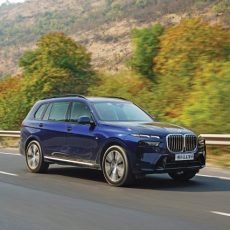We road-test the Maruti Suzuki S-presso and then see what life in a small car is all about over bad roads and fast highways

Driving down a busy road with a commanding view from my somewhat high perch in Maruti Suzuki’s S-presso did make me feel good about myself at times. The kind of satisfaction that a big, burly SUV usually manages to deliver. You know what I am talking about, don’t you? Then there were times when I was able to squeeze through gaps that no goliath of an SUV would dare enter and that, my friends, gave rise to the important question, ‘Is this really a mini-SUV?’
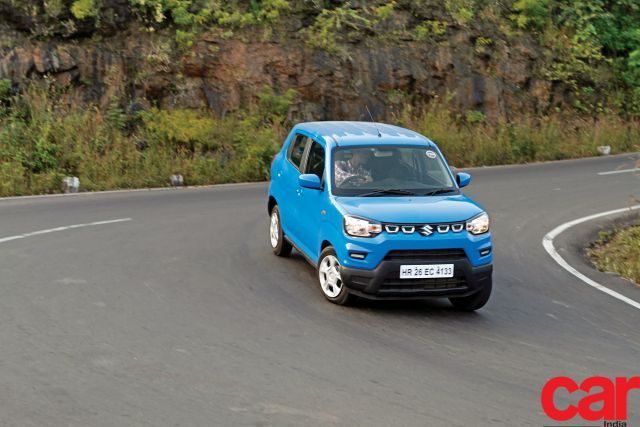
Maruti Suzuki are marketing the S-presso as a baby SUV. Sure, the car’s respectable ground clearance and boxy design certainly give it the visual appeal of an SUV. However, it did not discourage most people I met from calling the S-presso “cute”. I agree with them. The designers have given the front end of the car a rugged, muscular look and those strong lines continue along the sides, ending in a boxy tail end with large square wheel-arches for company. Well, they certainly nailed the SUV formula but the proportions of the S-presso have the final say. Viewed head-on, it seems as if the small car’s height is greater than its width and, standing on those skinny tyres, the S-presso does look like it has skipped leg day at the gym one too many times. So, I am going to keep the “mini-SUV” title in reserve for the Jimny, if and when it comes.
Maruti Suzuki have released a plethora of accessories to amp up the look of the S-presso. A simple way to give it more charisma would be to invest in the body cladding and alloy wheels. That’s just the tip of the iceberg. The deeper your pockets, the deeper you can delve into the accessories brochure and kit out your ride.
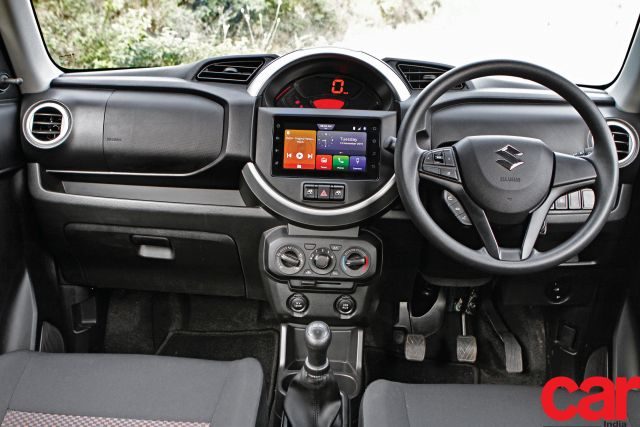
Take off the SUV-glasses and you will see the S-presso for what it is: a compact tall-boy that may just be your best buddy for the cut-throat, fight-for-every-inch traffic that plagues most of our cities. Fortunately, the S-presso’s cabin is a nice place to be. Maruti Suzuki have used silver accents on the neatly laid-out dashboard and it complements the airy cabin. The S-presso comes stocked with adequate entertainment options, including Android Auto, Apple CarPlay, and Suzuki’s SmartPlay Studio. Drawing inspiration from a certain British marque, Maruti Suzuki have centrally placed the instrument cluster and touchscreen infotainment system to relay information to the driver (and everyone else in the car). While there is no tachometer, the S-presso does have a useful distance-to-empty and average fuel consumption display. Want more pizazz in the interior? Delve into that brochure again with your credit card on standby. There are numerous options and combinations for elements, including dashboard styling, door trims, floor-mats, and seats.
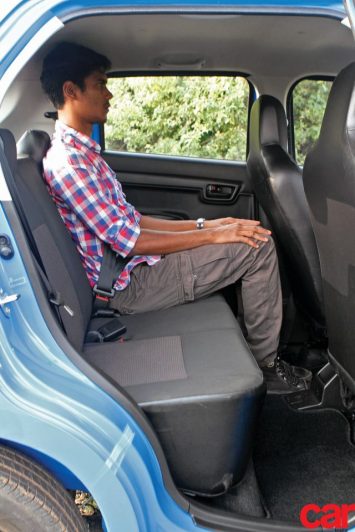
In spite of its compact dimensions, the S-presso did surprise me with the amount of space it has in the cabin. Legroom and headroom are not an issue in both rows for a car in this segment but three people in the second row is a bit of a squeeze unless you have size-zero models for friends. However, being a little over six-foot tall, I was not fully comfortable either because I was left wanting for adequate head and thigh support as a passenger. The lack of height adjustment for the driver’s seat even in the top-of-the-line variant meant that my view was a little restricted at times but not to an extent where it was a deal-breaker.
Powering the S-presso is the familiar K10B 1.0-litre engine that churns out 68 hp at 5,500 rpm and develops a peak torque of 90 Nm at 3,500 rpm. This mill is now BS VI-compliant and more refined than before. At idling, you can feel a faint thrum of the engine that smooths out to almost nothing once the car begins to roll; quite impressive for its class. It also powered the S-presso to 100 km/h from standstill in a decent 15 seconds. This car has a five-speed gearbox with well-spaced ratios that are great for city driving. Roll-on figures were quite impressive and the S-presso developed enough torque to pull away cleanly from low speeds even in top gear. During our performance run we were able to hit a top speed of 154.3 km/h in fourth gear. Fifth gear is an overdrive ratio that is best suited for cruising on the highway.

Before I talk about the driving dynamics, you should know that the S-presso is built around the reliable impact-absorbing Heartect platform with a MacPherson strut set-up at the front and a torsion beam axle at the rear. The set-up is on the firmer side but not to an uncomfortable level. The S-presso offers an admirable ride quality that is quite impressive for a car in this price bracket. At low speeds, it glides over pothole-ridden roads smoothly without upsetting the occupants of the car. Throw it into a corner and you will discover that the firm suspension helps the car hold its line quite easily.
On the highway, the S-presso offered a pliant ride in a straight line but did have a moment of doubt before regaining confidence while switching lanes or being overtaken by a heavy/fast vehicle. Maruti Suzuki have done a commendable job with the cabin insulation because even at triple-digit speeds, not much tyre noise crept into the cabin to annoy me.
The S-presso has a turning radius of 4.5 metres, which is brilliant for tight U-turns and parking in small spaces. Its light steering and compact dimensions helped me manoeuvre the car through tight spots with ease and confidence that are hard to come by in larger cars. The steering itself needs a little getting used to. At high speeds, there is just enough feedback to connect bitumen to brain but the steering wheel refuses to self-centre itself after you have turned it either way.
In the safety department, the VXi+ variant is loaded (for its price) with features including ABS with EBD and dual airbags. The former proved itself quite competent when we did the braking test. Dropping anchor from 100 km/h to a dead stop, the S-presso stayed on its course and did not flinch. It managed to shed that speed in 3.42 seconds within 47.69 metres. That’s not bad at all.
One of my major concerns with the S-presso is that Maruti Suzuki have not provided a dimmer for the inside rear-view mirror. Considering some of our more “enthusiastic” drivers tailgate with their main beams on, this little feature should not have been overlooked in the list of equipment offered as standard.
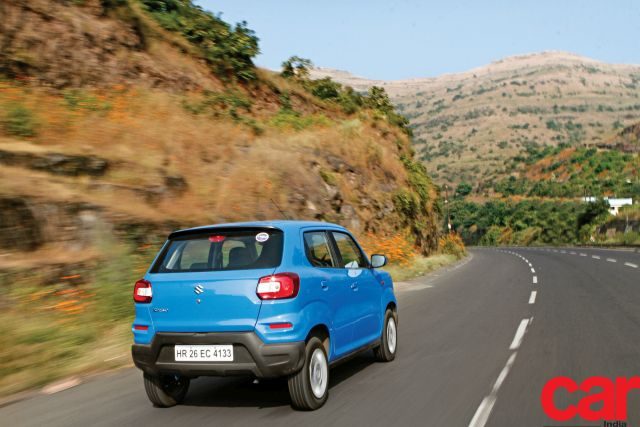
To summarize, the S-presso is a great car for city use and a decent offering from Maruti Suzuki for all-round use. In the sales figures for October, Maruti Suzuki continue to dominate the top 10 with as many as eight models and guess which one is in the eighth place? The S-presso, with more than 10,000 units sold. While styling is subjective, the refined motor, impressive ride quality, and the list of equipment on offer do make it a strong contender for the consumers targeted by the recently refreshed Renault Kwid. Of course, at Rs 4.48 lakh, it is slightly more expensive than the top-end manual Renault Kwid 1.0 RxT(O). Any takers?



